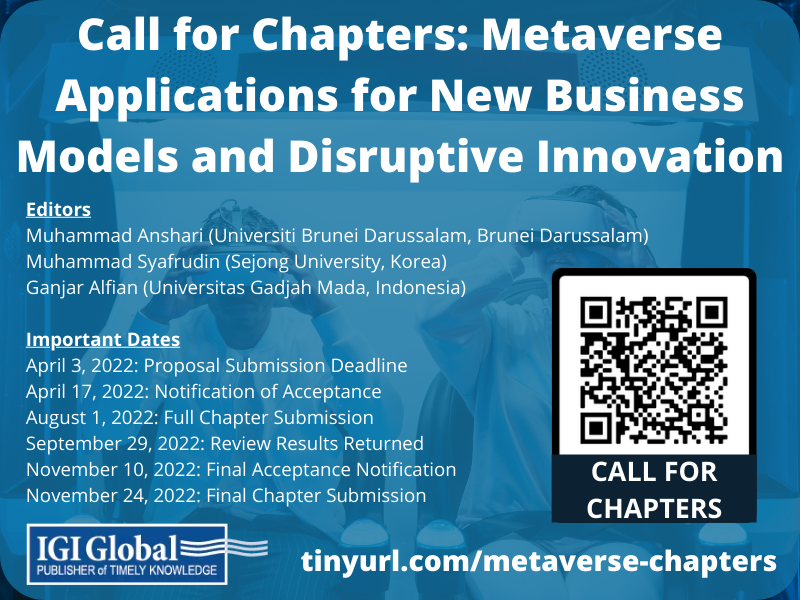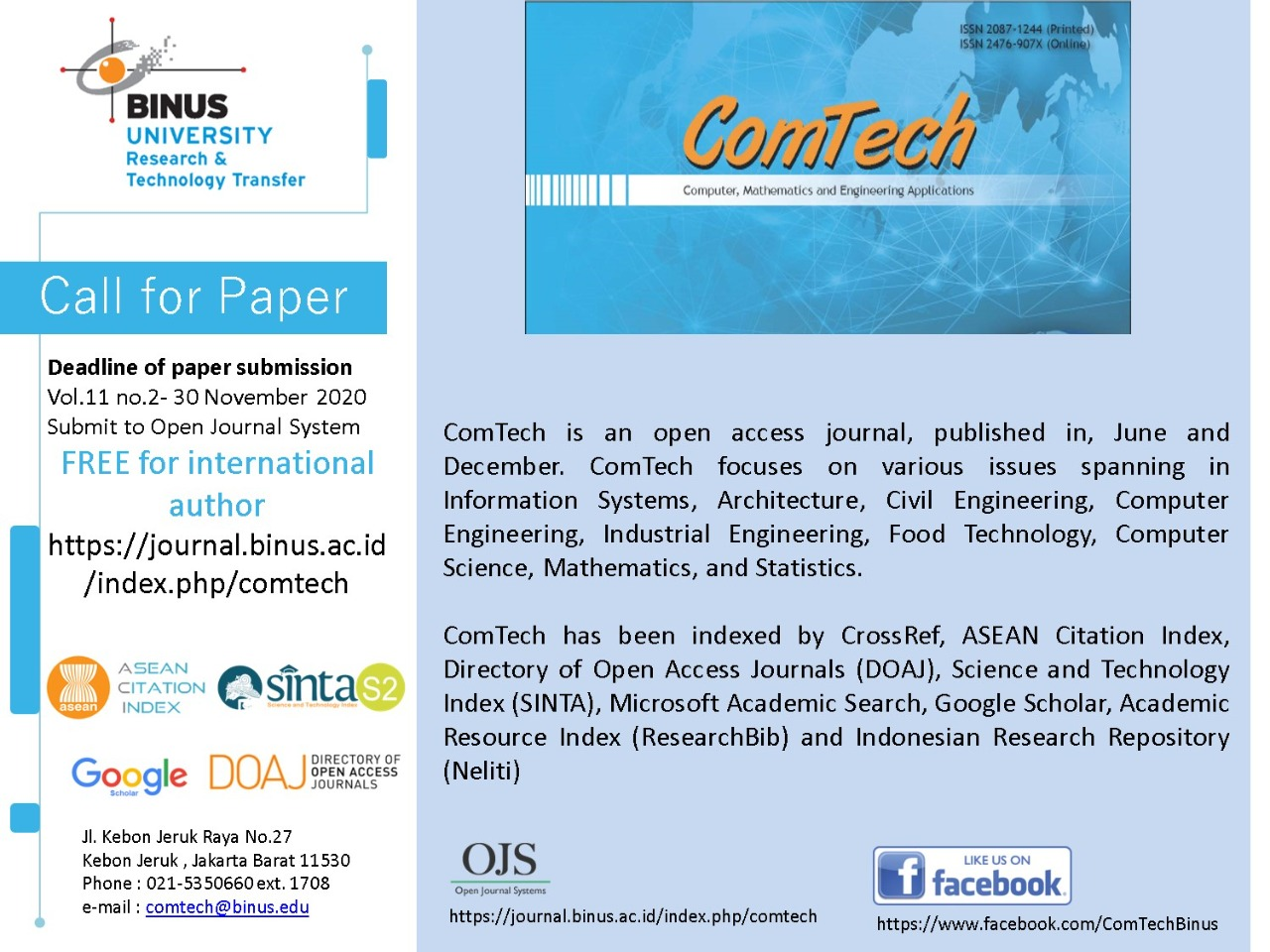
Dear Colleagues,
Currently, we are in the process of editing a forthcoming book entitled "Metaverse Applications for New Business Models and Disruptive Innovation", to be published by IGI Global, an international publisher of progressive academic research.
We would like to take this opportunity to cordially invite you all to submit your work for consideration in this book. We are certain that your contribution on this topic and/or other related research areas would make an excellent addition to this book. Please visit https://www.igi-global.com/publish/call-for-papers/call-details/5848 for more details regarding this book and to submit your work. You may kindly use the following link to submit a chapter: https://www.igi-global.com/publish/call-for-papers/submit/5848
If you have any questions or concerns, please do not hesitate to contact us. Thank you very much for your consideration of this invitation, and I hope to hear from you by 4th April 2022.
Best wishes,
Muhammad Anshari (Universiti Brunei Darussalam, #bruneidarussalam)
Muhammad Syafrudin (Sejong University, #korea)
Ganjar Alfian (Universitas Gadjah Mada (UGM), #indonesia)
Editors


